Five-year study looks at clusters of farmers in Santa Barbara
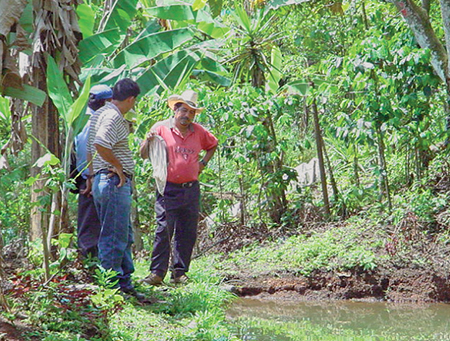
Small-scale aquaculture in Central America has often failed since efforts began more than two decades ago. But with the current coffee crisis – prices are at 100-year lows – affecting tropical smallholders around the world, tilapia growing is taking on new meaning as a lifeline and source of livelihood.
Some small farmers in Honduras have experienced remarkable success, and their ponds have provided real food security and income benefits for the families involved.
The authors examined the circumstances and resources that enabled clusters of small-scale tilapia farmers to realize their enterprises over the past five years. The study found technical assistance and the availability of fingerlings key factors for these subsistence producers.
Government support limited
In Honduras, tilapia development has taken place during an extended period of administrative reorganization and political uncertainty that is directly related to the low quality of government services available to the rural sector. The commercial tilapia industry is still recovering its growth pattern after Hurricane Mitch, and more recently has had to deal with fingerling shortages and disease problems. Governmental sources of technical assistance have been uneven at best, and farmers have learned to utilize private firms and nongovernmental organizations for services and technical assistance.
Extension issues
Kurbis (1997) identified several conditions that undercut successful fish farming in Honduras. The United States Peace Corps ceased its aquaculture efforts after 1995 budget cuts. Other extension agencies involved in aquaculture were found to have neither the organization nor the resources to effectively promote aquaculture. It is also often assumed that extension services understand the basics of the technology they oversee. Detailed prescriptions for fish culture often are less than useful to extensionists whose expertise lies in other areas and who have only piecemeal training in aquaculture.
A small number of government aquaculture technicians currently provide farmer training and technical problem solving in some areas of the country, but the commercial sector is largely self-sufficient. The specialist serving the study area and neighboring departments experienced some success in her efforts to support producers. Unfortunately, a recent change of government eliminated her position, and as of this writing a successor had not been appointed.
In recent years, the Panamerican Agricultural School has conducted a regular series of farmer and technical training programs. Supported by the United States Agency for International Development, expatriate researchers from Auburn University and the University of Georgia in the United States have collaborated in organizing conferences, publishing manuals, and maintaining a Spanish-language website to make technical information and publications available. A Taiwanese technical mission based in Comayagua also provides technical assistance to some tilapia farmers in Santa Barbara.
Small-scale culture in Santa Barbara

Santa Barbara is a mountainous, coffee-producing and relatively densely populated department in northeast Honduras. Its soils and rainfall are generally considered adequate for tilapia production. The study area also has many streams and groundwater sources – additional basic preconditions for successful small-scale fish culture.
The authors identified two communities – Nuevo Lempira and 21 de Octubre – where clusters of 10 and 15 producers engaged in over five years of tilapia cropping. These subsistence producers have small backyard ponds, sometimes on steep slopes, where they feed fish with available inputs and purchased feed in a semi-intensive, integrated activity. At this level of practice, natural food within the system is increased by organic manures, sometimes complemented by low-cost supplementary feed.
Although the systems employed are highly variable and individualistic, small farmers have incorporated tilapia culture within their traditional farm activities, such as domestic livestock (swine, chickens, cows) and coffee production. Corn and beans, always central food crops, have assumed greater importance with the seemingly permanent decline in coffee prices.
Farm and household byproducts were most often used to feed fish, but some farmers used rice bran or other purchased feeds. Narrow economic optimality did not seem to be a central feature of farmer decision making for their tilapia enterprises. Instead, diet variety, risk reduction, and values related to the identity or experience of growing fish seemed to be important for these small holders.
Rural reconstruction project
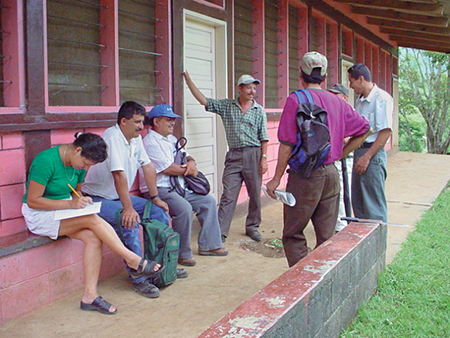
The most direct support for tilapia farming in the study communities is provided by a local nongovernmental organization named Rural Reconstruction Project. Its work with subsistence farmers includes distributing fingerlings, providing technical support through weekly visits to farmers, recording pond progress, and organizing community meetings to provide feedback and technical recommendations.
Farmers repeatedly mention their uncertainty about how to grow fish and the importance of the technicians in their success. Strong community relationships lead tilapia growers to help each other overcome problems.
Technical assistance
Technical assistance remains a central requirement for sustainable aquaculture development. Pannell (1999) argued that farmers are likely to come to any radical innovation with skepticism, uncertainty, prejudices, and preconceptions. They will probably hold an attitude that the people who advocate such a radical system do not understand the realities of farming, or at least their farm.
Such aversion to risk is particularly acute for subsistence farmers, for whom food security is an ever-present issue. Fish culture often stimulates interest on its own merits, but the successful practice of growing tilapia requires basic understanding of biological processes that are not usually part of indigenous knowledge systems.
Seed supplies
Another consideration facilitating the adoption and continued practice of aquaculture in the study areas has to do with the availability of seed supplies. Fingerling supply is a critical uncertainty for small- and medium-scale fish farmers who seek to restock ponds or begin another cycle of production.
Several large-scale tilapia operations and a now-privatized government station supply fingerlings to Santa Barbara producers, but not all provide animals at all times. The government’s main fish station in the neighboring department of Comayagua and some nearby private hatcheries continue to be sources of seedstock.
Of more immediate relevance to the subsistence producer, technicians from the Rural Reconstruction Project assist in finding sources of fingerlings. They also provide transport, coordinate restocking among multiple farmers, and otherwise support fish culture in the area. This assistance facilitates the continued practice of fish culture, but has also fostered some dependence on the NGO for these services.
Advantages of clusters
Clusters of producers can experience advantages in production and restocking. Benefits from being part of a localized group accrue to clusters of farmers who are better able to respond to market demand for fish, and may facilitate connections to buyers seeking fish for resale, restaurant use, or home consumption.
“Coyotes,” middlemen who supply tilapia to urban markets, may find it more useful to call on known clusters of producers because of the increased likelihood of finding quantities of desired sizes of fish. Farmer networks also help generate understanding about frequently experienced problems such as animal predation and theft. Extensive theft was not an issue in the study communities, but such problems have discouraged new and prospective producers in other localities.
Marketing
Marketing is often cited as a central issue in the success of fish farmers. Researchers expected the income provided to the community by nearby mining operations would be a factor in the marketing of tilapia, but this was not found to be a significant consideration. The research suggested that most subsistence producers consumed their own production, sharing or exchanging fish with extended family members and neighbors. Thus, marketing is not the critical issue for small holders that it is for commercial producers, who must organize outlets for large volumes of fish.
Conclusion
A number of contextual and organizational characteristics foster the sustained practice of tilapia culture as a source of nutrition, income, and food security in Honduras.
The study communities met a number of preconditions for fish culture. The soils, rainfall and water-holding capacity of the terrain enabled the construction and replenishment of fish ponds. Solidarity among the producers characterized a social environment in which they did not have extensive worries about the security of their crop. The availability of competent and caring technical assistance provided enduring support while farmers experimented, experienced failures and overcame difficulties.
Tilapia production in these communities was not an important source of income. Tilapia culture in small ponds is a lifeline for families that can reach to their pond for protein on days when no other source is available. Fish culture is a sideline that uses household scraps and spare time to improve diet variety or an item for barter with neighbors. Tilapia culture also builds livelihoods when it provides new possibilities for production based on understanding of the productive potential of aquatic resources.
Note: Cited references are available from the first author.
(Editor’s Note: This article was originally published in the December 2002 print edition of the Global Aquaculture Advocate.)
Now that you've reached the end of the article ...
… please consider supporting GSA’s mission to advance responsible seafood practices through education, advocacy and third-party assurances. The Advocate aims to document the evolution of responsible seafood practices and share the expansive knowledge of our vast network of contributors.
By becoming a Global Seafood Alliance member, you’re ensuring that all of the pre-competitive work we do through member benefits, resources and events can continue. Individual membership costs just $50 a year.
Not a GSA member? Join us.
Authors
-
Joseph Molnar, Ph.D.
International Center for Aquaculture and Aquatic Environments
202 Comer Hall
Auburn University
Auburn, Alabama USA 36849-5406[117,100,101,46,110,114,117,98,117,97,46,103,97,115,101,99,97,64,114,97,110,108,111,109,106]
-
Elizabeth Trejos-Castillo
International Center for Aquaculture and Aquatic Environments
202 Comer Hall
Auburn University
Auburn, Alabama USA 36849-5406 -
Pablo Martinez-Mejia
International Center for Aquaculture and Aquatic Environments
202 Comer Hall
Auburn University
Auburn, Alabama USA 36849-5406 -
Suyapa Triminio
International Center for Aquaculture and Aquatic Environments
202 Comer Hall
Auburn University
Auburn, Alabama USA 36849-5406 -
William Tollner, Ph.D.
International Center for Aquaculture and Aquatic Environments
202 Comer Hall
Auburn University
Auburn, Alabama USA 36849-5406 -
Brahm Verma, Ph.D.
International Center for Aquaculture and Aquatic Environments
202 Comer Hall
Auburn University
Auburn, Alabama USA 36849-5406 -
Dan Meyer, Ph.D.
International Center for Aquaculture and Aquatic Environments
202 Comer Hall
Auburn University
Auburn, Alabama USA 36849-5406
Tagged With
Related Posts
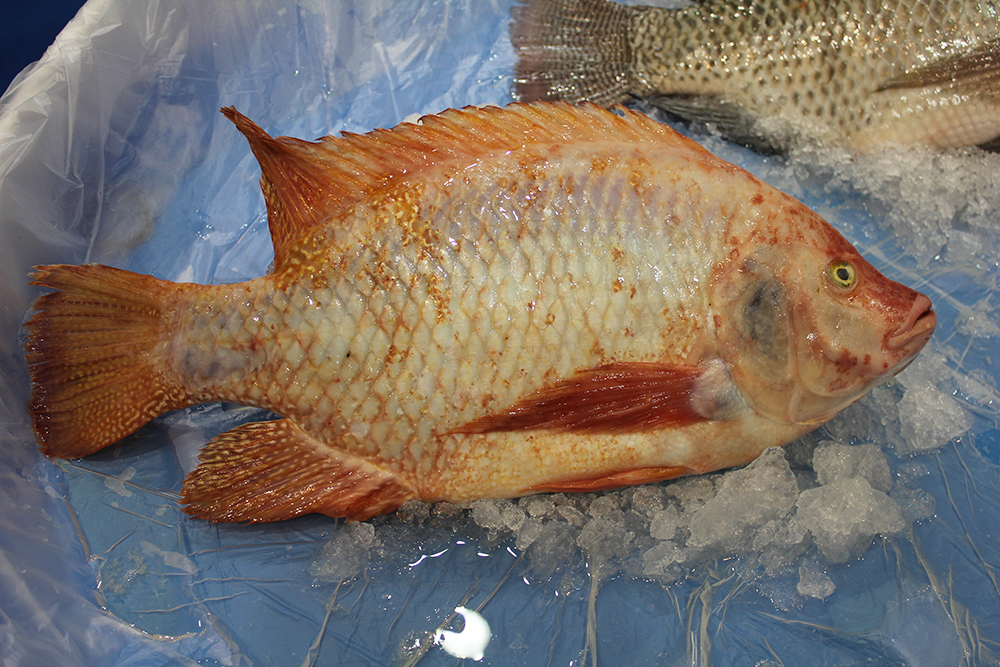
Intelligence
Adding value to tilapia to tap into U.S. market
New markets for tilapia and expansion of existing ones can be created by planning and implementing properly designed geographic strategies to meet discriminating consumer preferences. Low labor costs in most producing countries promotes value-adding by the production of fresh fillets.
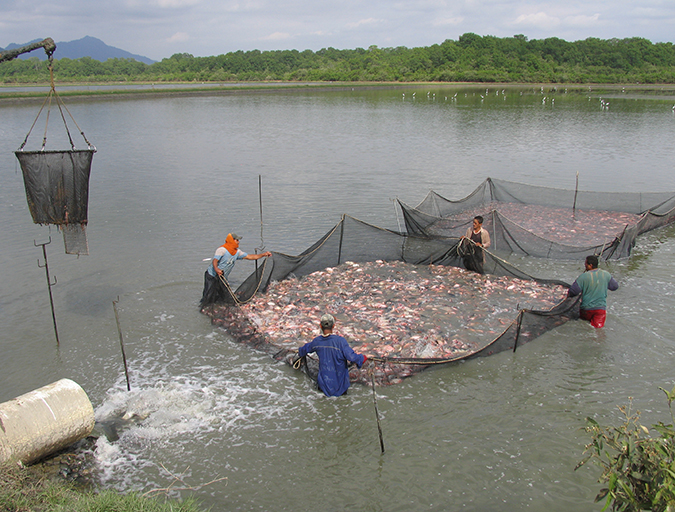
Responsibility
Addressing safety in Latin America’s tilapia supply chain
Over the last decade, the experience gained by many tilapia farmers combined with proficient programs implemented by local governments have significantly improved tilapia production in various Latin American countries like Colombia, Mexico, Ecuador and other important tilapia producers in the region.
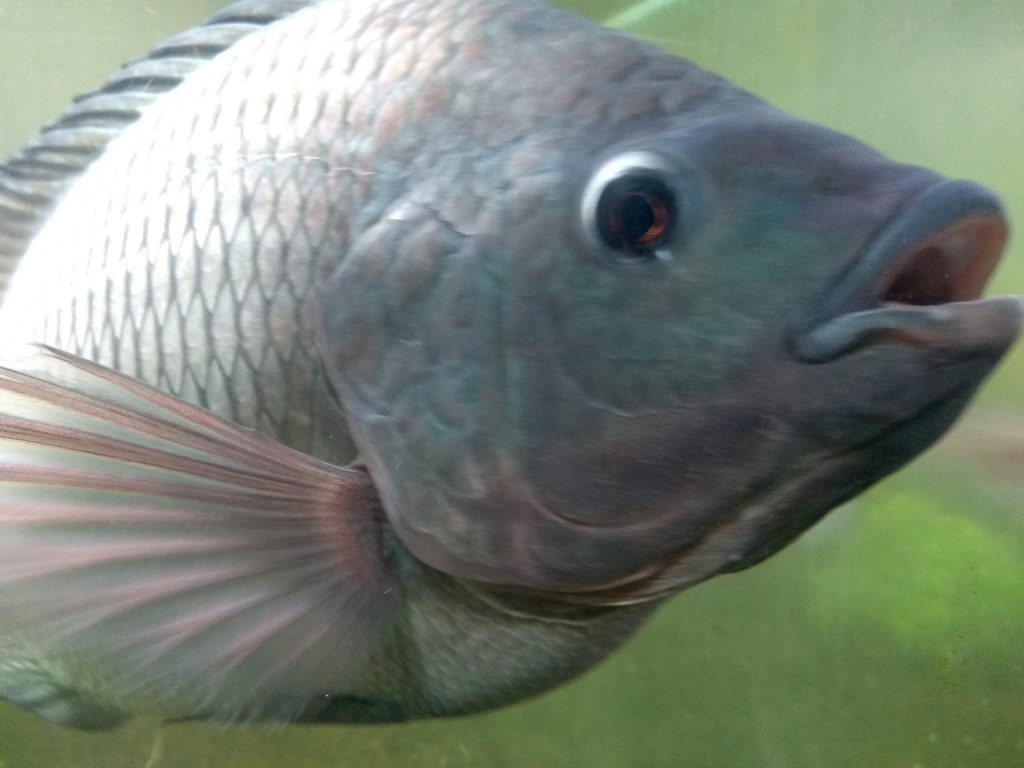
Health & Welfare
Advances in tilapia nutrition, part 1
This two-part review brings together scientific and field advances in tilapia nutrition and feeding to better support the formulation of feeds for better production performance.
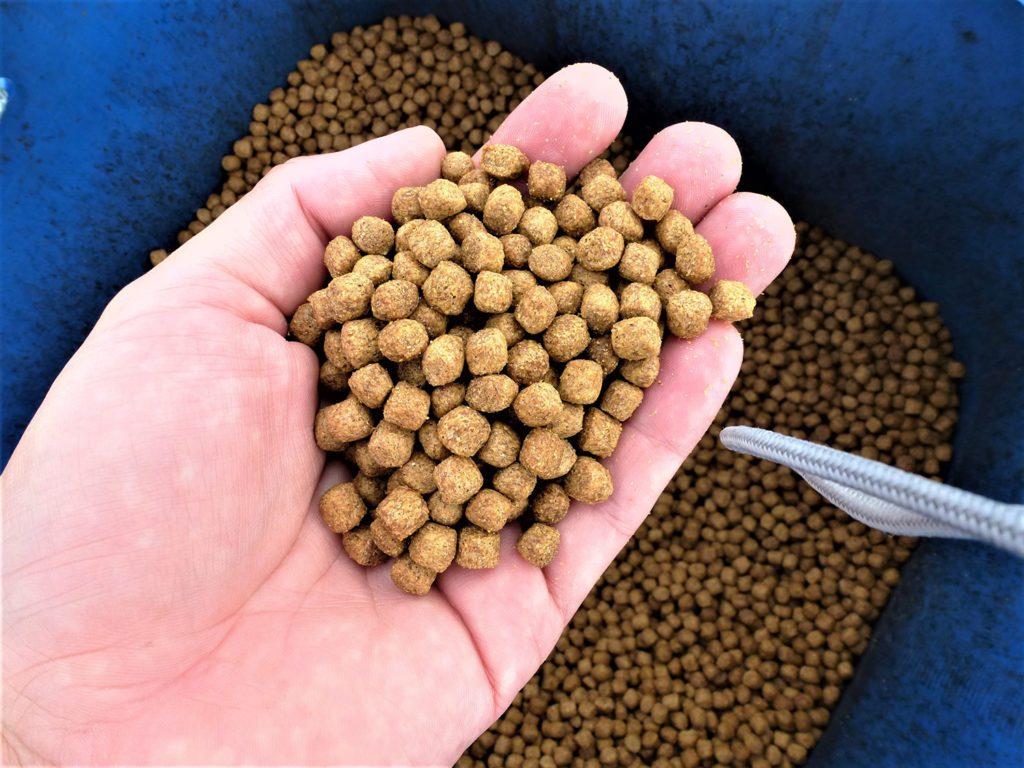
Health & Welfare
Advances in tilapia nutrition, part 2
Nutrition has an important role on growth, performance and flesh quality of tilapia. Part two of this two-part series looks into mineral supplementation and feeding strategy.


